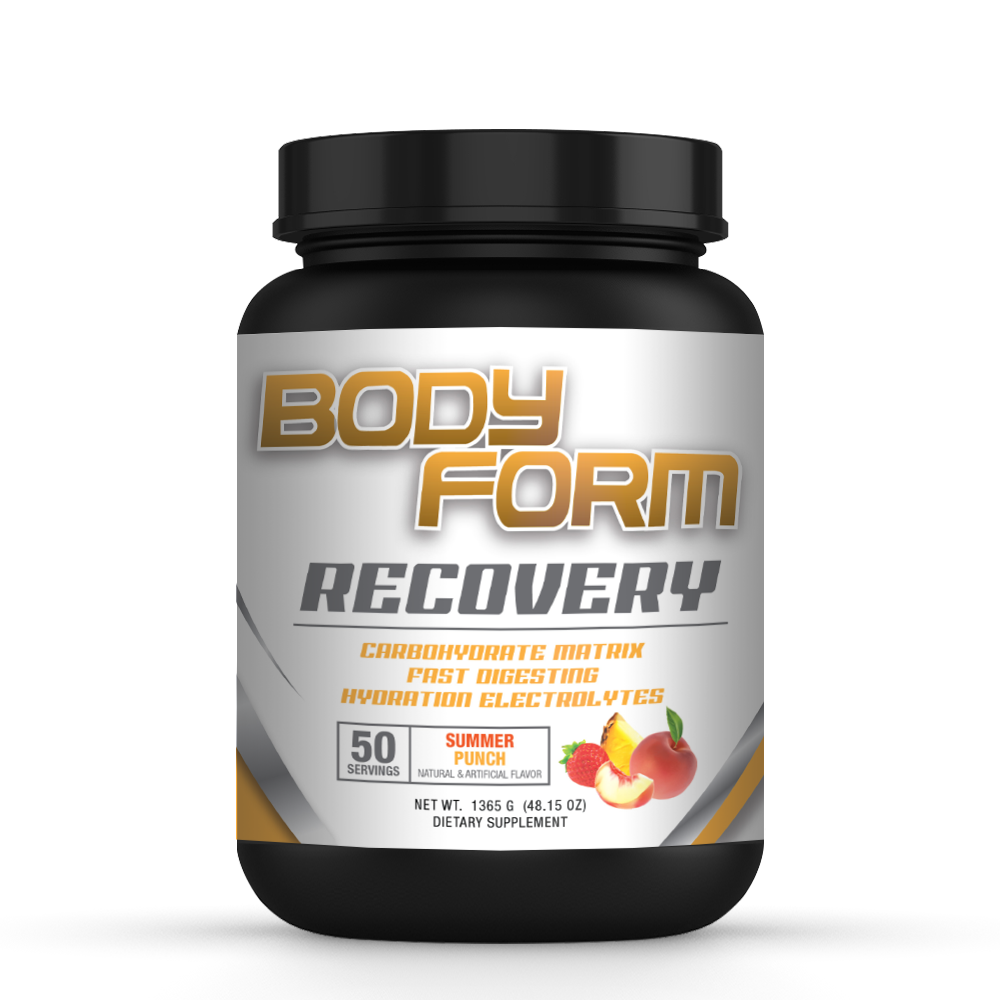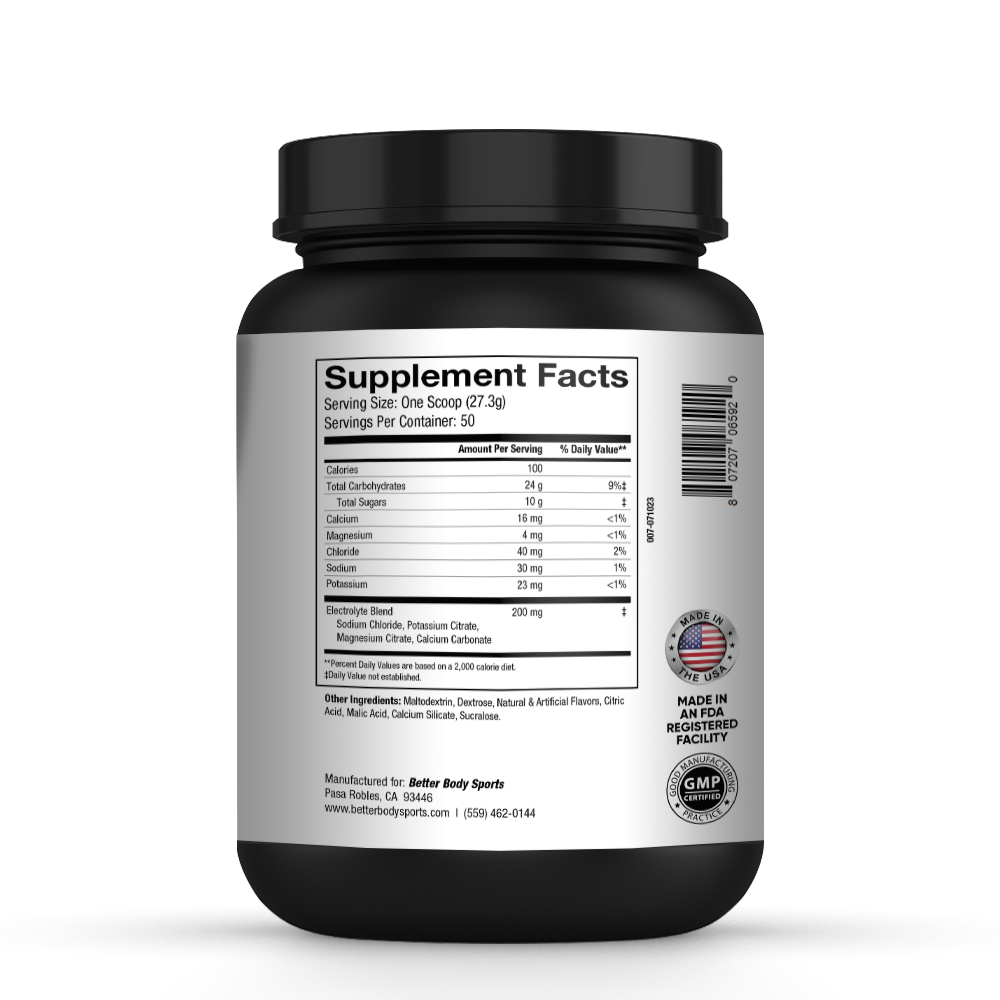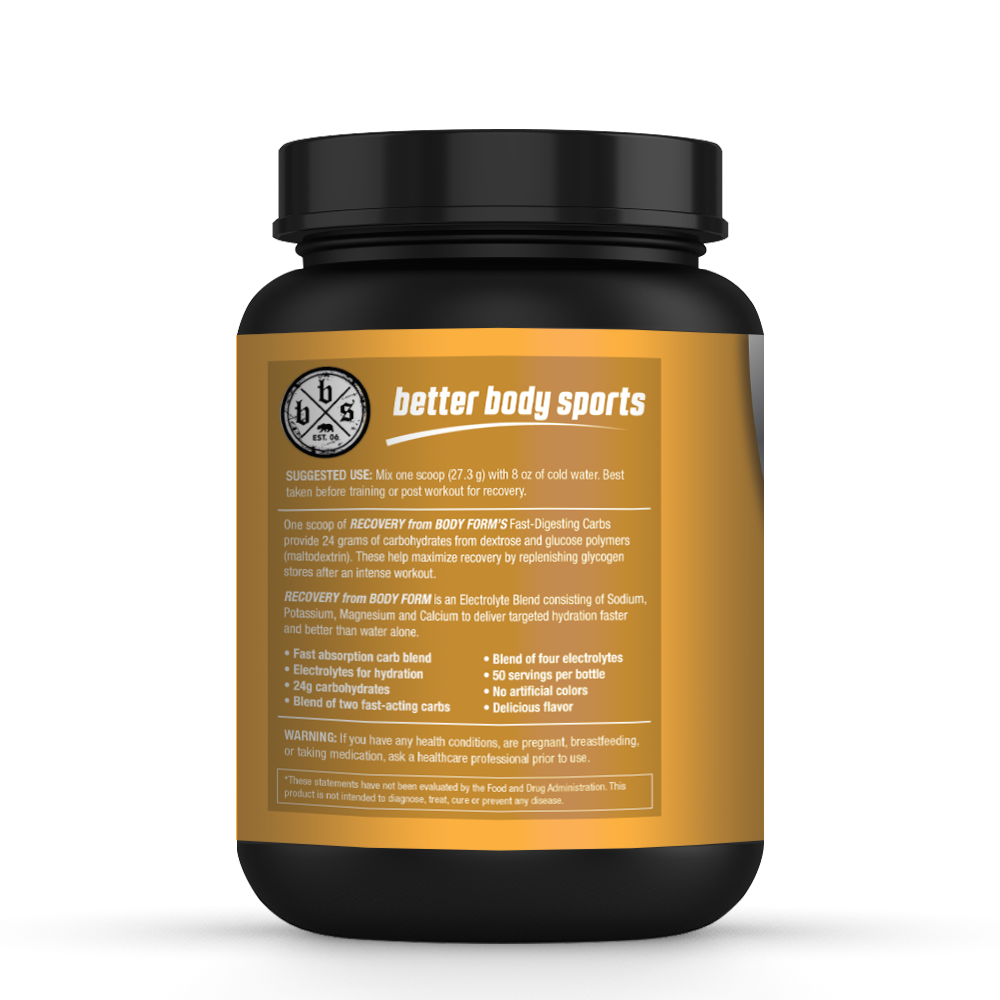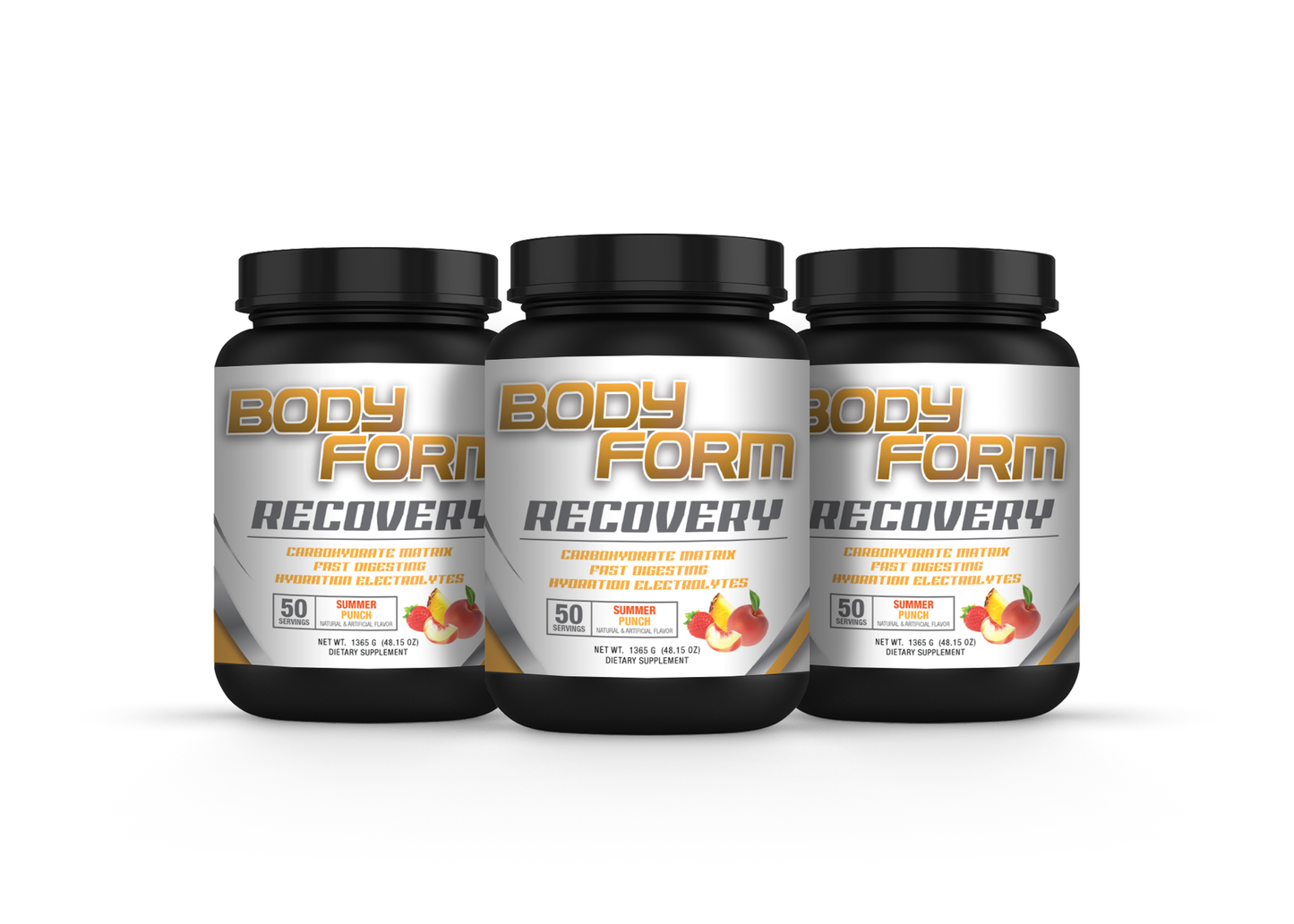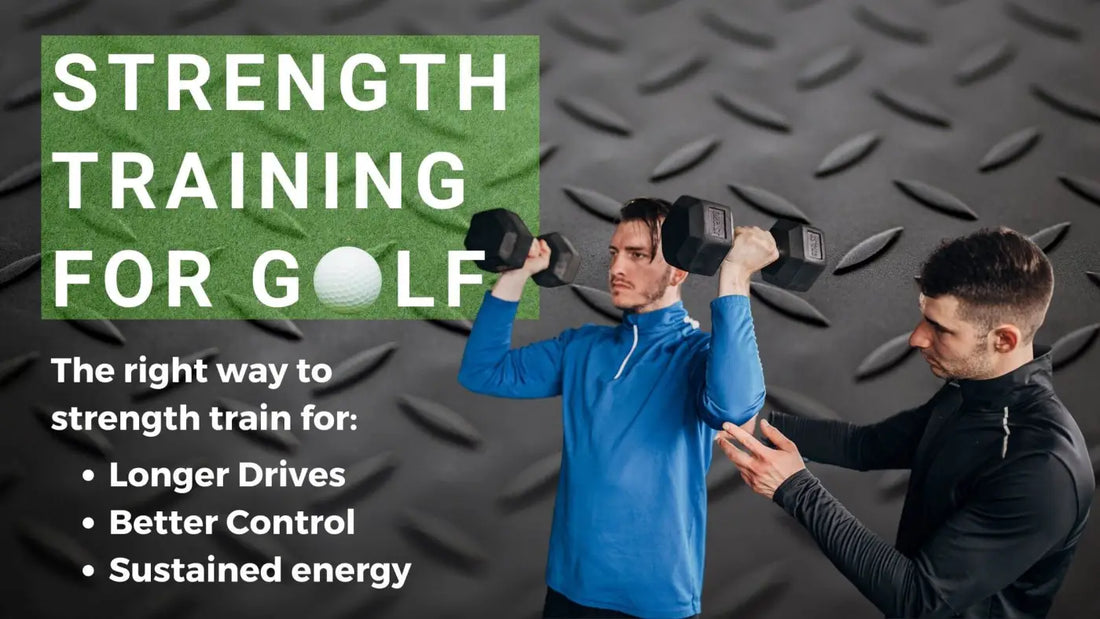
Strength Training for Golf
Share
Strength training has always been a touchy subject for golfers. The initial thought was that resistance training would restrict a golfer’s flexibility to where it prevented a proper rotation in the backswing and through the ball. Strength training for golf seemed to do more damage than it did good.
While this type of thinking is less prevalent today, you can still hear the hesitancy in a commentator’s voice when talking about a player’s recent increase in muscle mass. There always seems to be a fear that building muscle and strength will have a negative long term impact on the players game.
Is Strength Training for Golf Important?
Yes. If a golfer wants to maintain or gain distance, then strength training is an important factor for long drives. But this isn’t the only benefit. Here are other benefits for increasing muscle strength through resistance exercise:
- Strength training teaches the ability to control the body through many distinct movement patterns. This helps to prevent injuries caused by the repetitions required in a single movement pattern that golf requires.
- Resistance exercise helps to create the mind muscle connection. In golf, when we work on improving our swing, a coach may ask us to focus on activating a particular muscle, enforcing a new action in the swing. If we cannot connect the mind to the muscle, we cannot create the “feeling” the coach is asking for.
- The top of the backswing uses our body’s stretch reflex mechanism. This is how we create power. Strength training will help enforce activation of the stretch reflex mechanism with a greater demand than the weight of the golf swing and leverage of the body.
Required Muscle Recruitment in Golf
A modified version of the cable pulley wood chop exercise. This exercise most “looks” like the downswing. Unfortunately, this movement will have minimal impact on the golf swing. In order to design a proper golf fitness program we need to understand a few of the movement requirements created in golf that impact swing speed. Here are three examples of muscle recruitment in the golf swing.
Lower body loading
Some golfers may shift back to the rear foot whereas others will emphasize balance or keep weight on the front foot. But no matter your swing method, there is a loading of the lower body. When your shoulders rotate (and they should rotate) the lower body must engage to help balance and stabilize the upper body. To produce power, we must have explosive strength in the legs and glutes.
Shoulder Rotation
Shoulder rotation creates trunk rotation. Your power from pulling your rear shoulder behind your body comes from the isometric and rotational contraction of your abdominals, obliques, latissimus dorsi, extensor, and erector spinae muscles. This means that most of your back and core muscles do the work for shoulder rotation.
Jump Power
While your feet do not leave the ground, your strength in the golf swing at impact is much like a basketball player’s jump shot. It is similar in that the lower body has to generate force before they jump in the air. Generating power through trunk loading and shoulder rotation is wasted energy without the explosive push through the ball.
Explosive Training For Golf
From the weekend warrior to the professional golfer, you find that their exercise program consists of high repetition exercises. It is an interesting finding because except for a couple warm up swings, golf is a 1 repetition movement. Much like a powerlifter, the golfer will give a max effort and then take 5-minutes of recovery.
So why do most golfers take a high repetition approach to resistance training? There is not a for sure answer but it is most likely due to the “fear of getting bulky” mindset that media and commentators have caused.
What’s interesting is that high repetition training actually leads to greater hypertrophy (muscle growth) than power training. The confusion may also come because a power lifter has a bulky look. But this is more so because of the extreme amount of calories they consume and higher body fat percentage they have.
If you want a correct definition of what you can look like with explosive training, watch your weight class for Olympic weightlifting. You will notice that they can put up big numbers without looking bulky. It will give you an idea of how strong you can become without physically interfering with your golf swing.
Anaerobic Cardiovascular Endurance For Golf
There is no debate that some of the top golfers in the sport are true athletes. Dustin Johnson and Brooks Koepka are examples of professionals who put their athletic ability. There is certainly a benefit to being strong in uncomfortable positions. But we do not need to perform hands over head pistol squats on a bosu to prepare for optimal golf performance. Unilateral plyometric training has value, but it is not a priority.
You have heard it said that the shortest distance between two points is a straight line. We need to keep this in mind when we look to build an athletic ability in golf. If we were to shoot a round of 72, we would need to sustain anaerobic (max effort) power for approximately 50 shots and comfortably walk for 6-7 miles.
The simplest way to prepare for this type of performance is to train with more resistance for both the max effort and low intensity but long distance walking.
How Strength Training Can Hurt Your Golf Game
Sometimes you have to take a step back before you can move forward. When you build strength, you will hit the ball farther. This may have a short-term impact on getting the right yardage for your irons and your touch around the green. However, this is where media and commentators will dramatize the impact that strength has on control. Our bodies are quite good at adapting and you will figure out your new found distance in less time than you would think.
Having more power may also cause you to miss more fairways. The longer a ball travels in the air with a fade or a draw, the wider it gets from a straight line. But our ability to better control the golf club during the swing mitigates this impact. A consistent clubface at impact will lead to more fairways hit when compared to a slow swing that lacks control.
How to Build a Strength Training Program For Golf
To develop any sports specific training program, take the following steps:
- Learn how to move through a full range of motion
- Develop general physical preparedness
- Learn the fundamental lifts
- Add assistance exercises for weaker muscles or to prevent overuse injuries
- Include sport specific exercises
You must have reached an optimal level for each before moving to the next. There is no point in developing general physical preparedness if you have mobility issues. You are not getting the most bang for your buck by trying to perform sport specific exercises before you have mastered the fundamental lifts. But once they are a part of your program, they never leave your program.
Mobility Exercises for Golf
You can generate significantly more power just by being able to increase your body’s mobility. While you might think that you should head straight to the weights to increase your driving distance, you are better served to begin with a 3-4 week mobility routine. You can move on to the next step once you have baseline flexibility and range of motion.
GPP (General Physical Preparedness) For Golf
It is going to be hard to shoot a low number if you do not have the energy to walk 18-holes. This is one reason so many average golfers suffer in the later parts of the round. Their mental and physical energy suffers because they are not physically prepared to make 50 swings and walk 6-7 miles.
Compound Movements for Golf
You can learn to hit the ball a long way simply by becoming strong in the compound lifts. The exercises that recruit multiple muscle groups and engage the core muscles are the bread and butter of any fitness routine. It is no different for golf. Being strong in these movements accompanied by frequently swinging a golf club in the correct manner is enough to drive the ball past most people.
Assistance Exercises for Golf
We will correct many muscular imbalances through compound exercises, but your lifestyle and sport may leave a few areas that need attention. Assistance exercises will help to bring up a weaker muscle by giving more total volume (reps x sets) to the area that needs attention. Imbalances happen for many reasons but in golf specifically, we accelerate our swing in one direction with a forward tilt until standing up at the finish. This may cause us to have a weaker rear leg and lower posterior chain. Physical imbalances end up creating swing imbalances so to hit it long and straight, these areas need to be addressed.
Golf Specific Exercises
We finally come to where we can include exercises that resemble a golf swing or emphasize a particular action of the golf swing. Using tools such as cable pulleys, resistance bands, and a medicine ball can be useful in creating golf specific exercises. It is important to know what areas of the golf swing need improvement before adding these exercises. This is where your swing instructor can help you develop your training program.
Nutrition Recommendations for Workout Recovery and Golf Performance
Before you start slamming banana and peanut butter sandwiches, increasing swing speed does not require you to bulk like Bryson DeChambeau. You can get significantly stronger through a proper explosive training program with enough calories and protein to stimulate recovery from these workouts.
In fact, you can maintain your same diet and see strength increases from the mobility work, general physical preparedness, and initial 8-12 weeks of compound exercises. But you will have to take your nutrition seriously once you have established baseline strength levels. Not consuming enough calories and protein will put the emergency break on your strength and muscle gains.
The game of golf uses a lot of energy with most walking rounds of golf burning 1400-1500 calories. There is also a significant amount of micronutrient depletion because of the thinking processes required for shot making. Ensuring that you are eating micronutrient dense food sources will help you with workout and sport recovery. With proper nutrient timing it may also help sustain or improve your golf performance.
Calorie Recommendations
We base the amount of calories you should consume on many factors but following the total daily energy expenditure calculator could be a good start. For days where you play golf, add 1400-1500 calories if you do not need to lose weight.
Protein Recommendations
For building muscle, we can follow the ISSN’s recommendations:
“For building muscle mass and for maintaining muscle mass through a positive muscle protein balance, an overall daily protein intake in the range of 1.4-2.0 g protein/kg body weight/day (g/kg/d) is sufficient for most exercising individuals, a value that falls in line within the Acceptable Macronutrient Distribution Range published by the Institute of Medicine for protein.”
At the low and high end of this recommendation a 200lb male would consume 127-182 grams of protein in a day.
Before You Begin Your Golf Fitness Program
This article has summarized how to develop strength in your golf swing. Read through our other articles about mobility, gpp, compound lifts, assistance exercises, and sport specific movements before adding them to your training program. It is also wise to find a strength coach who agrees with these principles and understands golf swing mechanics and what a golfer experiences throughout a round.


